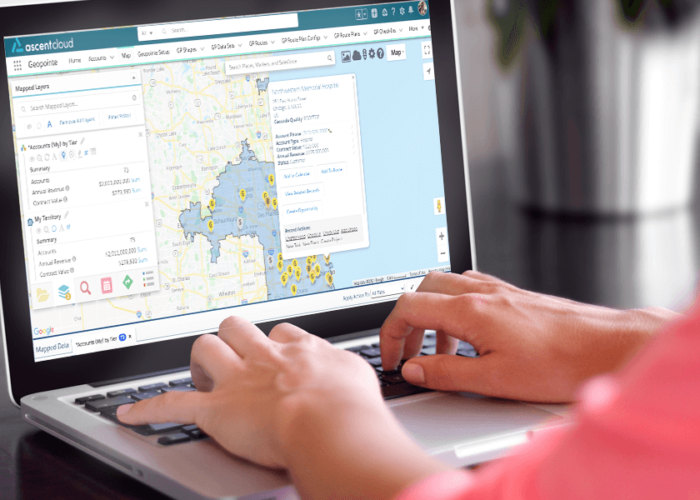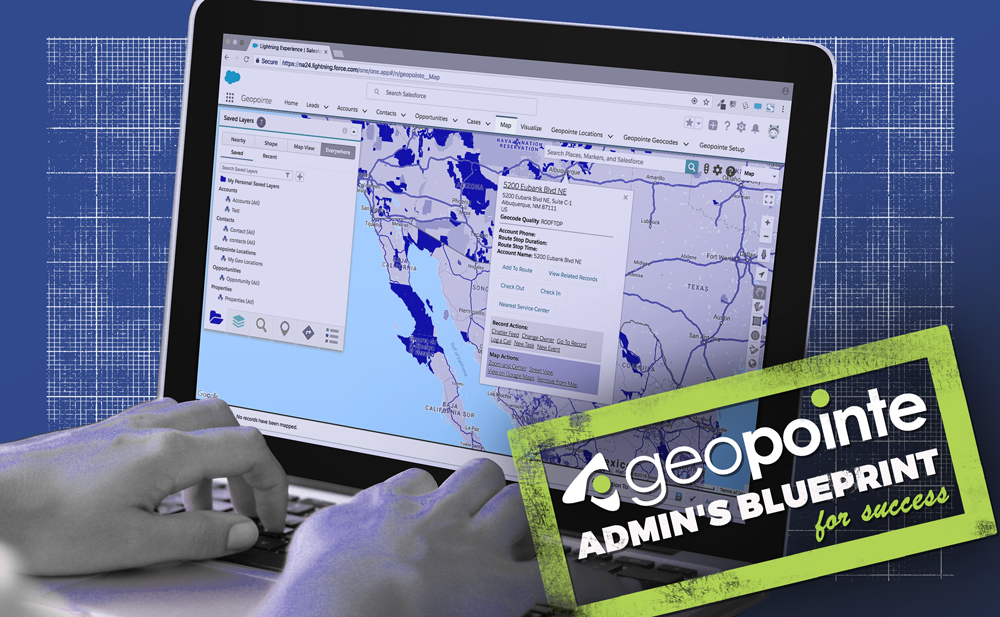
Key Geopointe Resources to Successfully Guide Your Development Team
As a developer, you know that Salesforce was built to be flexible and responsive to virtually any business need. Geopointe was built in the same developer-friendly spirit, with an extensive toolkit of supported API methods, URL parameters and Actions that can be deployed to support all types of workflows. In this blog, we’ll cover some powerful ways you can apply these tools.
Run a Dynamic Radial Search with One Click
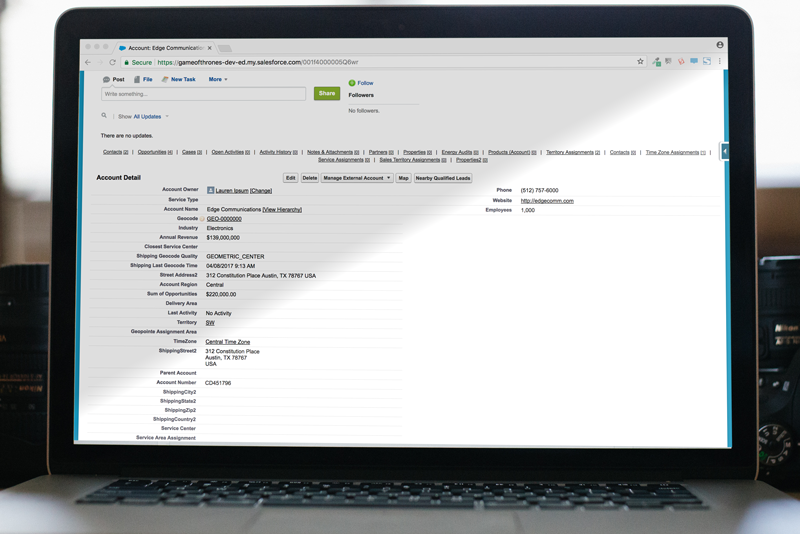
Dynamic map searches bring out the real power of Geopointe. For example, when a sales rep pulls up a record page, perhaps they may want to visualize nearby prospects or customers on the fly. You can create a powerful button that conducts this radial search instantly and dynamically.
To deploy this feature, you can apply URL parameters to a custom button called “Nearby Qualified Leads” and add it to an object’s page layout. With the inclusion of filter and radial search parameters, as well as a merge field, the button will show qualified leads in the specified radius of that record. This can help sales reps quickly plan their meetings and routes. Parameters can do much more – even calculate drive time and update lookup fields.
Automatically Populate Related Lists
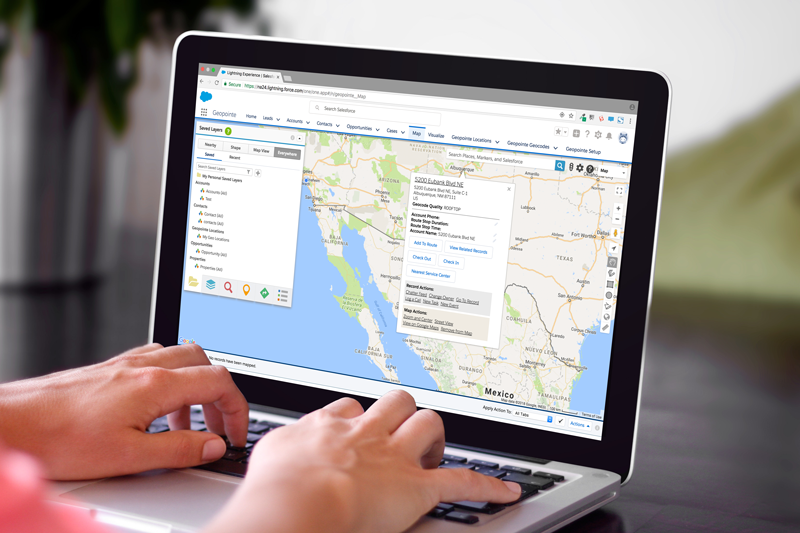
With a little bit of code, you can take radial searches to the next level and auto-populate fields with data returned in that search. This can be applied to streamline all kinds of business processes. For example, maybe your Customer Service team needs to know the closest service center on each Account record so they can schedule repair services accordingly.
Using Geopointe’s API methods in conjunction with a trigger, you can direct Apex to process information about an Account record, perform a radial search and return the first result in the list to populate the custom field. This is just the beginning of what you can accomplish in Geopointe with a little Apex coding.
Map Related Records
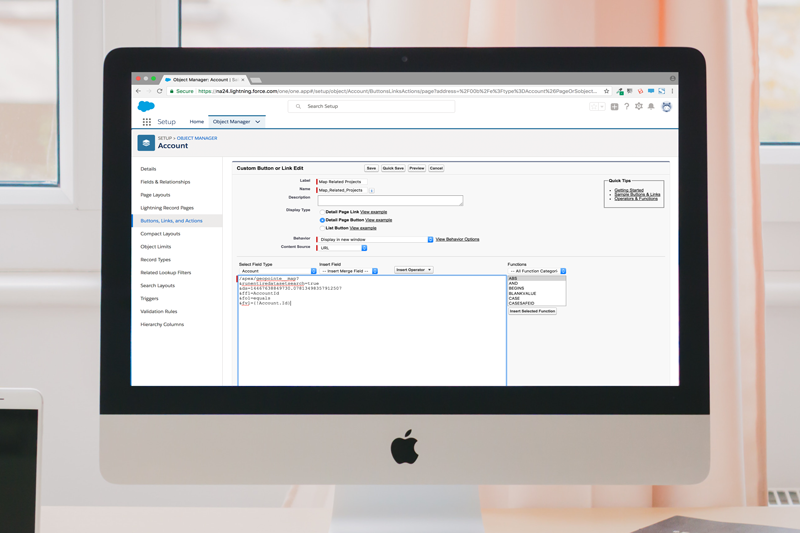
Another great use for URL parameters is the ability to load related records to the map with a single click. Perhaps your project manager wants to geographically visualize all the current projects related to a major account. Dynamic URLs can process this data instantaneously, saving project managers time and clicks so they can focus on completing their tasks.
To accomplish this, configure a custom button on the Account record that maps related objects with the use of a merge field filter. This concept has endless use cases, such as mapping contacts associated with an Account, properties associated with a property manager, and more!
Utilize Third Party Services
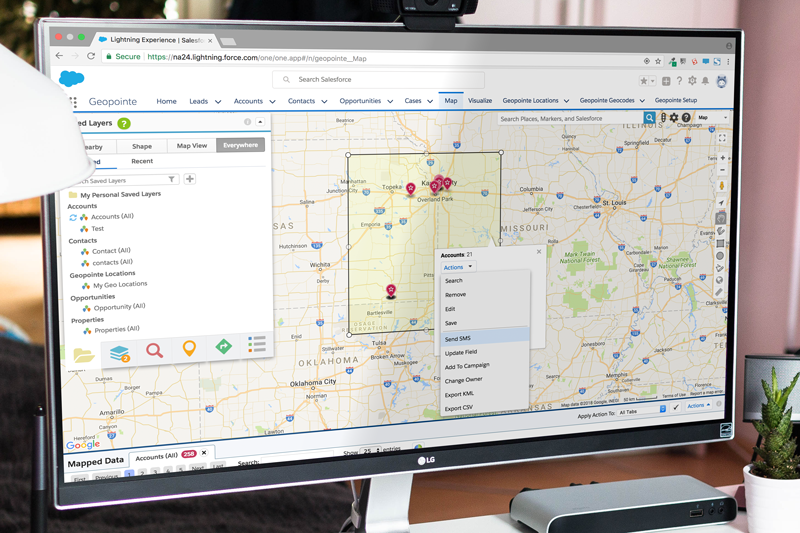
Invoking Geopointe’s Actions framework, along with custom Apex, introduces a world of possibilities, including third-party applications. Perhaps your support team needs to send outage alerts by SMS-text to a specific region of customers, or maybe your marketing team wants to send custom messaging based on location.
To configure this type of feature, create a custom list action using Geopointe’s Actions Framework, and configure it to send map information to a custom Visualforce page. Configure the page with a user interface that allows the end user to write a message and send it to selected contacts.
Launch an External URL
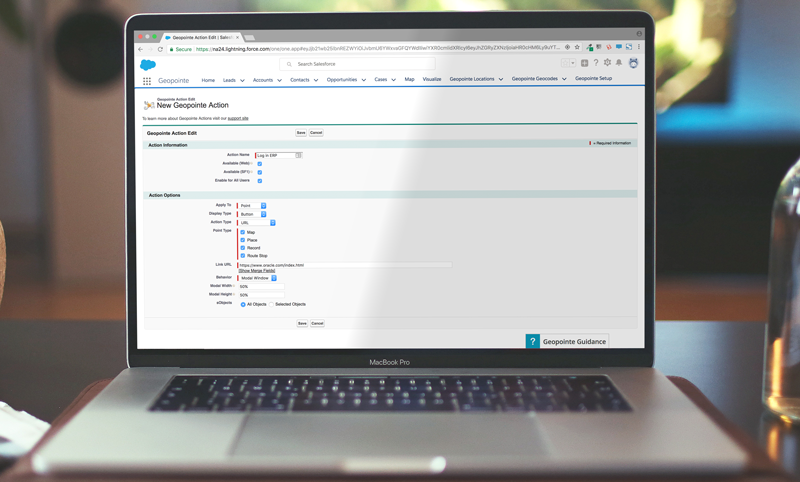
Map Actions can extend well beyond Visualforce pages, supporting virtually any type of external URL and capturing data in the process. Perhaps your product team needs to input data from the map into a cloud-based ERP system. You can streamline this task flow and save your users time.
You can configure the action to launch the ERP page in a modal window so the product manager never has to leave the Geopointe Map to complete their task. With the power of the Actions framework, you can automate all types of essential business processes for sales reps, technicians, managers and any other types of end users in your organization.

